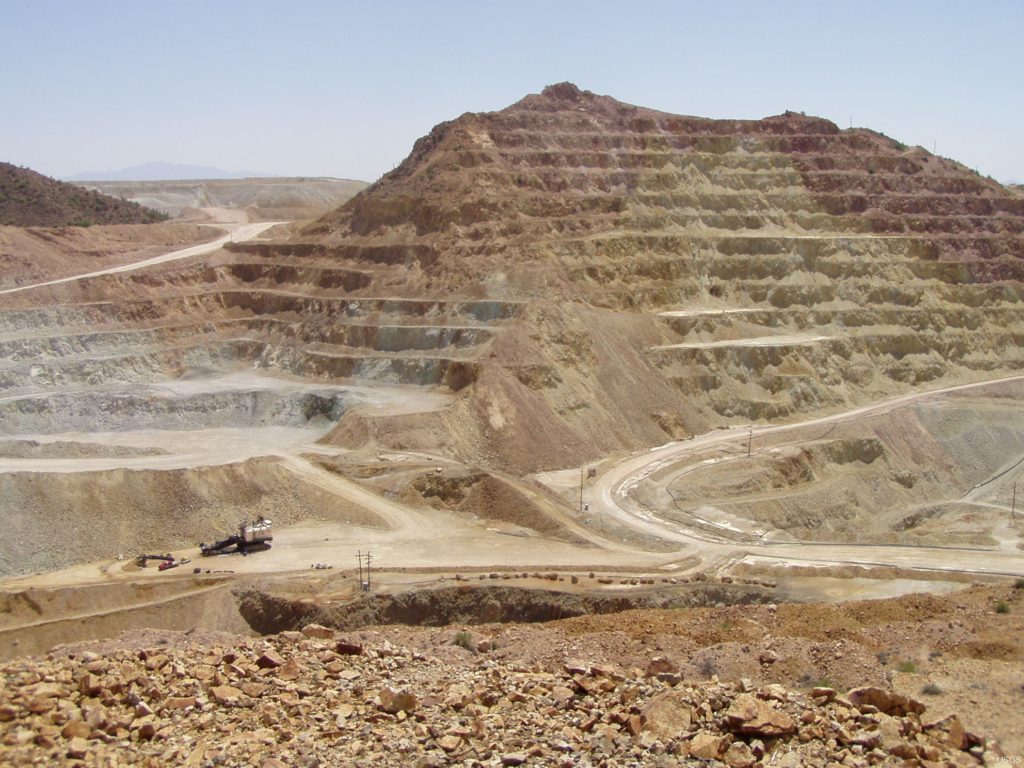Revisiting the 1872 Mining Law

This article was originally published in the Geological Society of America’s Speaking of Geoscience blog,
By Morgan Disbrow-Monz, GSA Science Policy Fellow
On October 5, 2021 the Senate Energy and Natural Resources Committee, chaired by Senator Joe Manchin (D-WV), met to examine and consider updates to the General Mining Law of 1872. Senator Catherine Cortez Masto (D-NV) posed the idea of a hearing in response to concerns about provisions – that have since been removed – included in the House-passed reconciliation package that would have imposed the first-ever royalties on hardrock mines. These provisions drew upon legislation and hearings held in previous sessions of Congress and most recently included the Hardrock Mining Reclamation Act that was introduced in the 114th, 115th and 116thCongresses, but did not receive a vote.
Signed into law by Ulysses S. Grant over 130 years ago, the 1872 Mining Law emerged as a result of the California Gold Rush, and was designed with the intention of increasing westward expansion in the United States. The law granted citizens and firms the right to explore federal lands for mineral deposits, and the right to stake claim to land for extracting minerals without paying a royalty. Instead, the title to federal land has little cost. Public lands are sold using a patent or mining claim for only $2.50 or $5.00 per acre, entitling the purchaser to the mineral resources on this land. Critics believe that the law is outdated, results in heavy environmental impacts, and yields minimal returns to taxpayers. Congress has reexamined the law a handful of times over its lifetime, but the core elements of the bill are still intact.
As it stands, the law applies to minerals referred to as “locatable minerals,” which the Department of the Interior defined in 1873 as those that are 1) classified as a mineral, 2) are not disposable under other laws, and 3) make the land a more valuable asset for mining than farming. Locatable minerals encompass metallic minerals including gold, silver, uranium, lead, copper, zinc and nickel, as well as nonmetallic minerals including mica, fluorspar, gemstones, and certain limestones and gypsum.
On public domain lands, which make up 90% of all federal land, the law grants the hardrock mining industry the ability to extract minerals without paying a royalty, and essentially voids the responsibility of cleanup costs posed by old, abandoned mines by not including any environmental provisions. This process is different from how public lands are managed for other resource minerals such as coal or phosphate. While these minerals can also be mined on federal lands, operations take place under a leasing system, and therefore miners are required to pay a royalty for extraction, yielding returns for taxpayers and providing funding for remediation. Currently there are more than 550,000 abandoned mines that pose a significant environmental threat and the EPA estimates will cost >$50 million to clean up. However, no one is being held responsible for these abandoned mines, and there are limited funds available for remediation, which places the burden on the communities being affected.
There is a spotlight on hardrock mining currently because these critical materials are used in nearly every market and industrial product. For example, the photovoltaic cell technology in solar panels alone includes: aluminum, copper, nickel, iron, lead, silver, tin, zinc, cadmium, gallium, geranium, indium, selenium, and tellurium. The demand for these minerals is increasing exponentially to support the demand for renewable energy infrastructure and technology, and Senator Manchin stated that “developing new sources of critical minerals is essential to our independence and national security…and we need to responsibly develop these resources.” Additionally, the International Energy Agency released a report in May 2021 documenting a 700% to 4000% increase needed in mining for critical energy minerals in order to achieve a global path to net-zero carbon emissions. Achieving net-zero emissions dramatically increases the nation’s demand on these minerals, and members of Congress want to ensure that precautions are taken to “protect our workers, mining communities and our nation’s competitiveness,” as stated by Senator Barrasso (R-WY), the ranking member of the Energy and Natural Resource Committee.
The initial reconciliation package that passed the House outlined three major changes to the 1872 Mining Law:
- an 8% gross royalty tax would be imposed on the income from mining claims covered under the Act, with the exceptions being a) only 4% for mines with preexisting plans of operations on the day of the enactment, and b) the tax would not be applied to small mines that have <$100,000 in gross income
- a reclamation fee or a “dirt tax” would be implemented such that companies would have to pay 7 cents per ton of material moved.
- a claim maintenance fee.
These amendments sparked significant controversy, with critics noting they outlined a one-size-fits all approach for hardrock mining that could negatively impact the domestic mining industry, and force many mining jobs overseas.
The discussion that took place within the Senate Energy and Natural Resources Committee on examining and reforming the 1872 Mining Law included five witnesses representing the mining industry, environmental groups and taxpayers. The overall discussion was very bipartisan, and three main themes emerged out of this hearing:
- There is an exponentially increasing demand for the minerals being targeted with hardrock mining, especially since the Biden Administration’s agenda is focused on renewable technologies and upgrading infrastructure, all of which requires minerals acquired by hard rock mining.
- There is a general consensus among policy makers, conservationists, and industry that the 1872 Mining Law needs to be reformed and all entities support a responsibly imposed royalty so that money not only goes back to the taxpayers, but also creates a revenue stream for abandoned mine reclamation.
- The royalties proposed in the House reconciliation package that initially passed would be very detrimental to domestic mining, and would ultimately lead to a greater dependence on foreign countries for critical minerals.
Though these initial amendments to the 1872 Mining Law have since been stripped from the reconciliation package, reformation discussion remains relevant as landmark innovation policy legislation that concerns economic and national security is expected to be a priority. This includes the Senate-passed U.S. Innovation and Competition Act, and the House-passed DOE Science for the Future Act and National Science Foundation for the Future Act. GSA has a position statement on critical minerals, and encourages the statement’s use as a communication tool for anyone interested.
